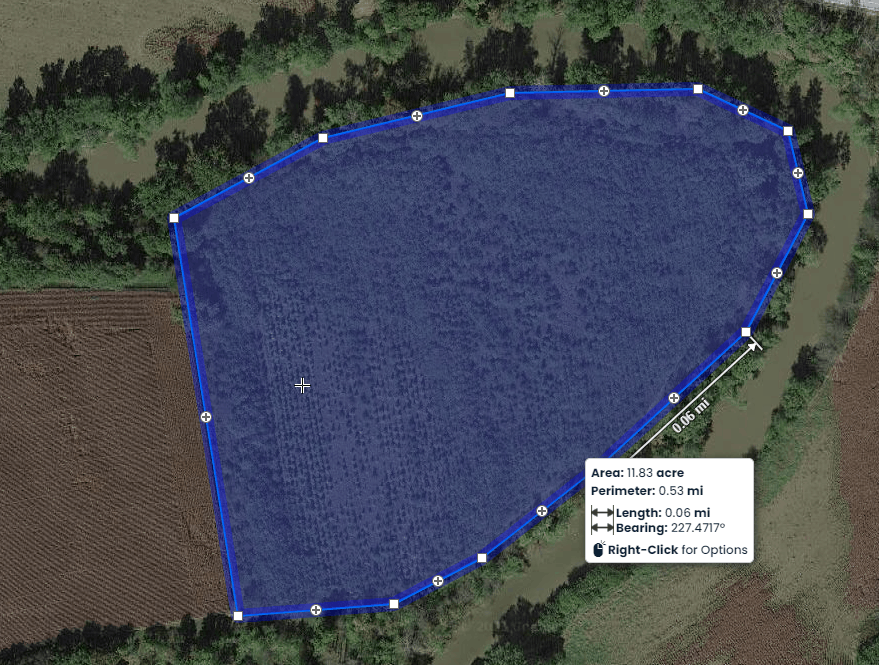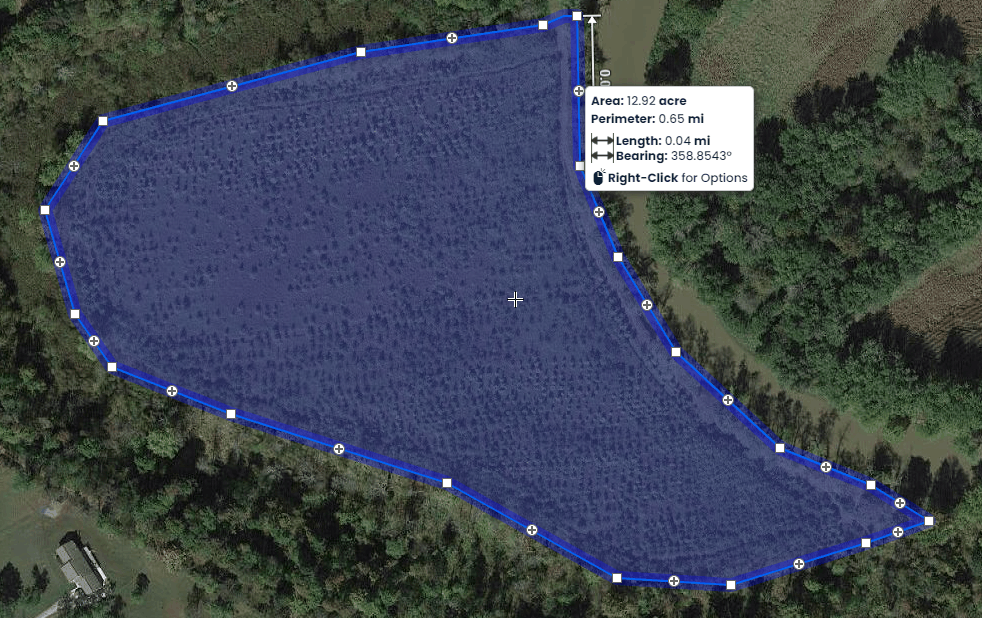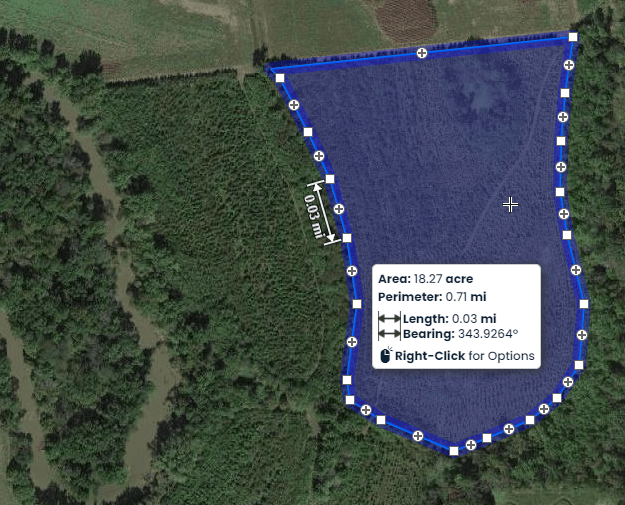Reforestation Project: Marginal Farm Fields
Description:
This carbon offset reforestation project converted over 70 acres of marginal cropland in Coshocton County and in Guernsey County, Ohio to permanent woodland. The former cropland is located near Wills Creek and is in the Wills Creek Lake floodplain. The fields were often wet and flooded, resulting in frequent crop losses due to excess moisture and flooding. When flooding did occur, it washed off any agricultural products and byproducts, including but not limited to pesticides, herbicides, and fertilizer.
The decision was made that it would be better for the local ecosystem, the environment in general, and for the landowner to convert this land into a permanent stand of hardwood trees. The site was prepared by removing debris and driftwood and controlling weeds. Subsequently, bareroot trees were planted across the entire plot area at approximately 680 trees per acre.
To download a PDF of the Reforestation Project Summary Document, feel free to click the download link below:
|
Project Summary 2005 | ||
|
Project/Subproject |
Project Acreage |
# of Trees |
|
Carbon Offset on Marginal Farmland |
|
|
|
Section A |
11.83 |
8100 |
|
Section B |
12.92 |
8800 |
|
Section C |
6.54 |
4500 |
|
Section D |
18.27 |
13500 |
|
Section E |
22.11 |
15500 |
|
Totals |
71.7 |
50400 |
Before/After Comparison
This planting project took place in 2005, and it is clearly visible from the photos below that the planted trees are growing very well. In the satellite image below, one can compare the reforested crop field (in green with visible rows of trees, center-left) with the flooded and damp crop field (right of center).


Planting Section Maps





Species Breakdown
|
Species Breakdown |
|
Tree Species |
|
Swamp White Oak (Quercus bicolor) |
|
Swamp Chestnut (Quercus michauxii) |
|
Burr Oak (Quercus macrocarpa) |
|
Silver Maple (Acer saccharinum) |
| Total Number of Seedlings: 50400 |
Why did this Carbon Offset Project Happen?
Aside from the benefit to the environment gained through carbon sequestration (the capture of CO2 from the atmosphere and storage in wood and other components of forest biomass), planting trees can provide the following benefits:
1) Reduce Erosion and Agricultural Runoff – Preserve Value and Protect the Ecosystem
Planting trees can prevent an immense amount of erosion. This protects the land as a resource, while also improving water quality. Trees and associated woodland plants capture and hold a large amount of any agricultural runoff such as topsoil, manure, nitrogenous fertilizers, chemicals, and more.
This protects the local ecosystem and keeps nutrients on the land. For this project specifically, replacing corn and soybean fields that were in a floodplain prevented the application of tons of fertilizer, pesticides, and herbicides that sometimes were washed into adjacent waterways during episodes of heavy rain or flooding.
2) Improve Wildlife Habitat – Add Value Today
Allowing even small sections of the most marginal land to return to natural forest provides an excellent environment for natural wildlife. This project created over 70 acres of prime wildlife habitat. Aside from the moral benefit gained by being a good steward of the environment, this can add serious value to land.
Leases of usage rights to those who love the great outdoors can be a large and untapped revenue stream for landowners and farmers. There are many individuals who love the great outdoors and lack access to quality land, and they are willing to pay a premium for exclusive access to land if there is sufficient natural habitat for wildlife.
3) Grow Healthy Stands of Timber – Add Long-Term Value
Even long-term reforestation projects for carbon capture do add timber value for the landowner. After a number of years (the time depends on growing conditions and tree species), selective harvesting of trees can be conducted when done in a way that allows the carbon to remain stored in the wood and biomass. In simple terms, carbon remains captured as long as forest products from harvest are not burned.
For example, if one mature oak tree is harvested and the leaf litter and small branches are left in the forest to become litter, while flooring is made out of the oak trunk, then the carbon that was captured in the wood products and biomass on the forest floor remain captured. It is only if one would harvest trees and burn them that much of the captured carbon would be released.
If you are interested in getting trees planted on your land, please check out Our Process for details, then Submit Your Information and a representative will be in touch.
Visit www.greenfutureforestry.com to see our offset solutions for individuals, families, businesses, and landowners.

